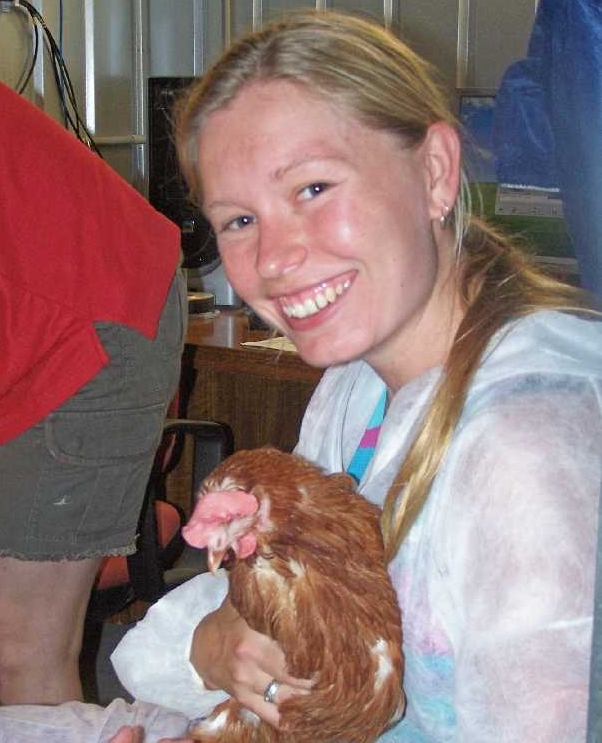Dr Lauren Edwards undertook her PhD, titled The human-animal relationship in the caged laying hen, with support from the first round Australian Poultry CRC (2003-2009) under the supervision of Professors Paul Hemsworth and Grahame Coleman at the Animal Welfare Science Centre. Now employed as a lecturer in Applied Animal Behaviour and Welfare at Unitec Institute of Technology in New Zealand, Lauren’s research results suggest that the human-animal relationship is very important for the welfare of laying hens.
It has long been established that poultry are innately fearful of humans, and that farm animals experiencing fear in the presence of stockpeople suffer from reduced welfare and productivity due to repeated exposure to this stressor. Lauren has researched human-animal relationships in commercial cage-layer facilities both here in Australia and in the USA. Her research has focussed on relationships between hen avoidance behaviour (as an indicator of fear of humans) and the behaviour and attitude of stockpersons on egg farms. This research has demonstrated that by using non-threatening behaviour around the hens, stockpersons can help poultry overcome their innate fear of humans and improve their welfare.
Attitudes and behaviour are closely linked, and in her PhD research Lauren found that “in general, negative stockperson attitudes were associated with more noise, faster speed of movement, less time spent stationary, and less time in the ends of the aisles. Positive attitudes and empathy were associated with less noise, although there were fewer significant relationships for these attitudes.” Interestingly, the laying hens displayed greater avoidance behaviour in laying houses where the stockpeople made more noise, and less avoidance behaviour in laying houses where stockpeople spent more time standing still in front of the cages. That is, the attitudes of stockpeople toward their work were associated with behaviours that directly influenced fear of humans in their hens. Lauren explains, “These attitude-behaviour relationships for stockpeople working in the egg industry suggest a sequential human-animal relationship, in which stockperson attitudes may influence the welfare of laying hens.”
Further experimental research results have consistently suggested that close proximity of visual human contact is effective in reducing the behavioural response of hens to human contact. Interestingly, the duration of human contact was found not to be a significant factor.
For industry, the outcomes of this research are simple and easy to adapt into everyday practice. By keeping the amount of noise that they make to a minimum, and by working closely to the birds in a calm and non-threatening manner, stockpeople will be able to reduce the level of fear that their flock experiences. A calmer flock is more pleasant to work with, and may be beneficial for productivity.
On a final note, Lauren would like to thank all of the farms that participated in this research. Access to working farms is vital for making scientific research relevant to the egg industry, and the friendly assistance that Lauren received while on-farm was greatly appreciated.


